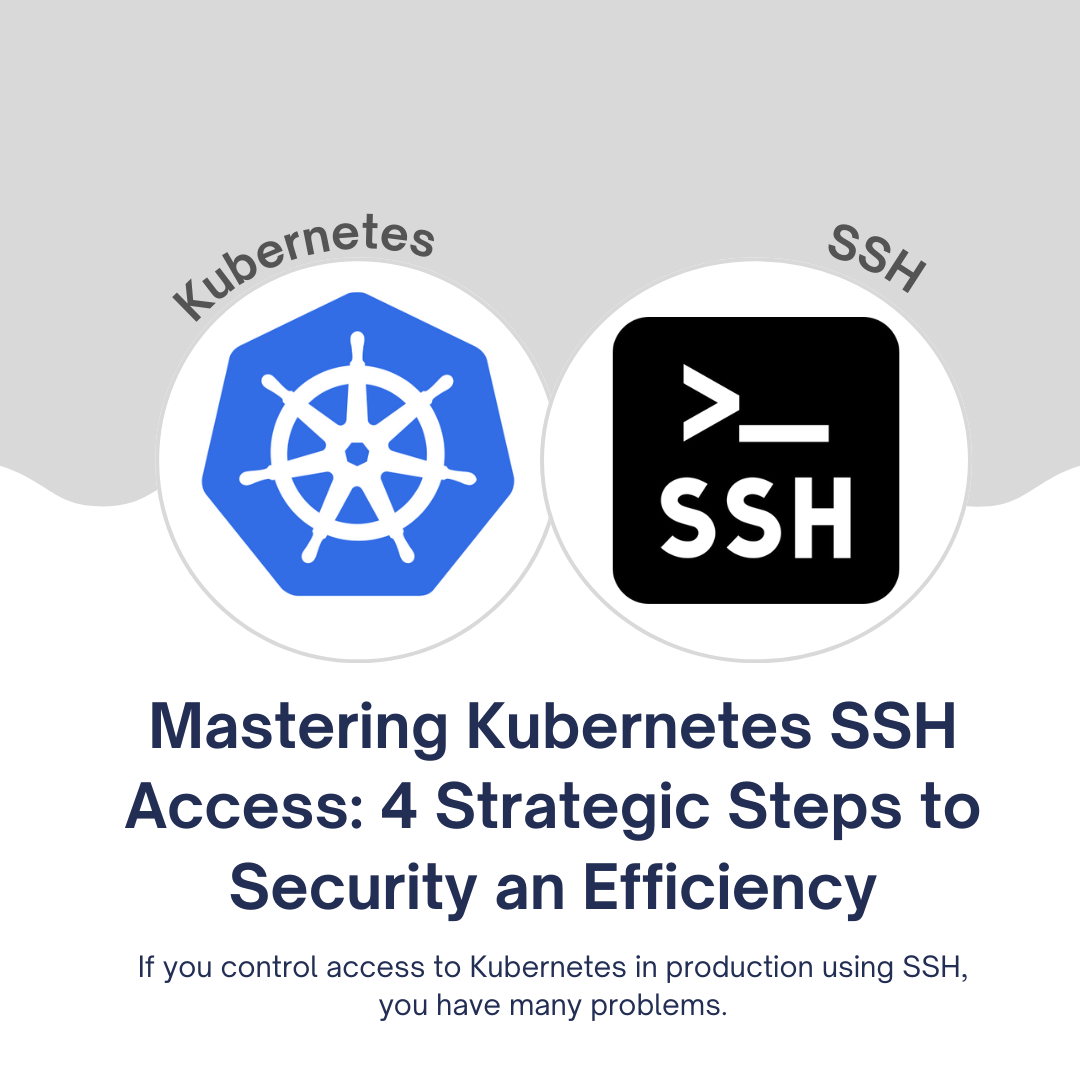Mastering Kubernetes SSH Access: 4 Strategic Steps to Security and Efficiency

Kubernetes, a powerful container orchestration system, has become the go-to solution for managing containerized applications at scale. However, when it comes to granting SSH access to Kubernetes in production environments, many organizations struggle with a variety of challenges. In this article, we'll explore the five primary issues associated with Kubernetes SSH access, their consequences, and practical steps to mitigate these challenges.
The 5 Major Challenges
Before diving into the solutions, let's understand the problems that organizations encounter with Kubernetes SSH access:
1. Fast Access is Critical
In the fast-paced world of software development, rapid access to the right engineers during production is essential for maintaining product speed. Troubleshooting, bug fixes, and incident resolutions depend on quick and efficient data access.
2. Inefficient Access Solutions
Unfortunately, many teams employ inadequate solutions for granting access to Kubernetes, leading to either significant security risks or inefficient workflows.
3. Building Infrastructure is Painful
Setting up infrastructure for Kubernetes access via SSH can be a daunting and complex task, often involving numerous components and configurations.
4. Hidden Vulnerabilities
The missing components in your access management strategy represent hidden vulnerabilities that can be exploited by attackers. These vulnerabilities encompass:
- Single Sign-on & Multi-Factor Authentication (MFA)
- Audit Trials and Personally Identifiable Information (PII) Protection
- Compliance with Regulations such as GDPR, PCI, SOC2, and HIPAA
- Developer Experience
Addressing the Challenges
Now, let's explore practical steps to address these challenges and enhance Kubernetes SSH access security:
1. Implement Single Sign-on (SSO) and MFA
Utilize Existing Systems
Start by incorporating Kubernetes into the systems you already manage, such as Google Workspaces. This eliminates the need for a separate LDAP directory.
Leverage Tools
Adding SSO to SSH access can be complex, so seek out tools that simplify the process. Options like Cloud Shell solutions from AWS or Google Cloud, as well as tools like Runops, can streamline this integration.
Gradual Approach
Avoid making SSO implementation a massive project. Instead, integrate components incrementally, starting with Google OAuth. This approach reduces the need for additional tools and accelerates access management improvements.
2. Prioritize Features Based on Industry Needs
Focus on Developer Experience
If your organization operates in an industry with fewer regulatory requirements and deals with non-sensitive data, prioritize improving developer experience, SSO, and MFA. Reduce the number of steps required for developers to access Kubernetes.
Compliance for Regulated Industries
Conversely, highly regulated industries like fintech may require extensive compliance measures, such as PCI. In such cases, prioritize audit trails and compliance over developer experience. Recognize that more steps may be necessary initially to meet stringent requirements.
3. Use Comprehensive Access Management Solutions
Reduce Complexity
Simplify access management by using solutions that cover multiple access points, such as Kubernetes, AWS, GCP, databases, and servers, within a single tool. While individual tools may excel in specific areas, managing multiple tools introduces complexity.
Unified User Experience
For example, Runops allows teams to manage various access needs from a single platform, offering a unified user experience. Sacrificing a slightly worse user experience for everything in exchange for centralized management can lead to more efficient operations.
4. Add Friction to Undesirable Access Methods
Incentivize the Right Approach
If certain access methods pose security risks but are fast and convenient, consider adding friction to encourage the desired method. For instance, introduce a form submission step to the process, making it less attractive than the ideal approach.
Gradual Transition
While this approach may not be ideal, it can serve as a temporary measure. Over time, improve the desired access method's experience to surpass the convenience of the undesirable method. This gradual transition ensures that security is not compromised while still optimizing efficiency.
In conclusion, addressing the challenges of Kubernetes SSH access requires a strategic and multifaceted approach. By implementing SSO, prioritizing features based on industry needs, using comprehensive access management solutions, and adding friction to undesirable access methods, organizations can enhance security, streamline workflows, and ensure compliance, ultimately achieving a more efficient and secure Kubernetes access management system.
